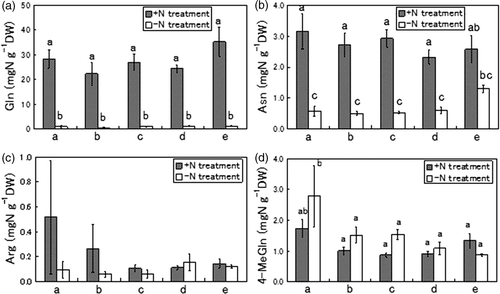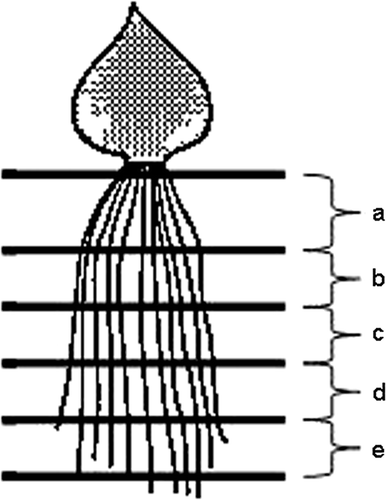Figures & data
Figure 1. A photograph of tulip (Tulipa gesneriana) roots cultivated in culture solution during the flowering stage in early May.
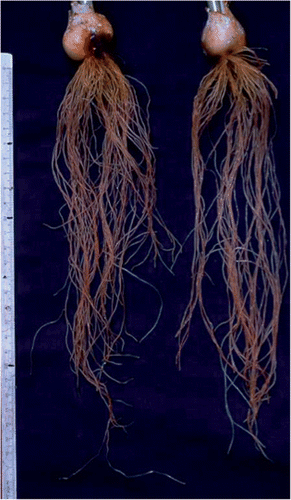
Figure 3. Comparison of the total concentration of free amino acids in whole roots, cortex and stele of tulips (Tulipa gesneriana) cultivated with −N and +N treatments. Error bars show standard error (n = 4). Different letters above bars in each part indicate a significant difference at the level of P < 0.05. N, nitrogen; DW, dry weight.
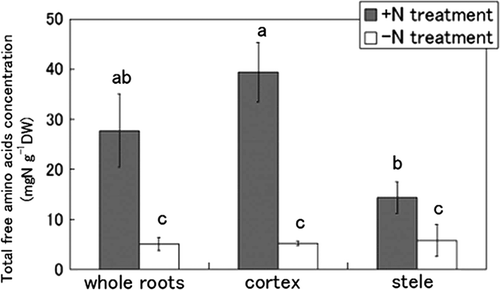
Figure 4. Comparison of predominant amino acids in whole roots, cortex and stele of tulips (Tulipa gesneriana) cultivated with −N and +N treatments. (a) glutamine (Gln), (b) asparagine (Asn), (c) arginine (Arg), (d) 4-methyleneglutamine (4-MeGln). Error bars show standard error (n = 4). Different letters above bars in each part indicate a significant difference at the level of P < 0.05. N, nitrogen; DW, dry weight.
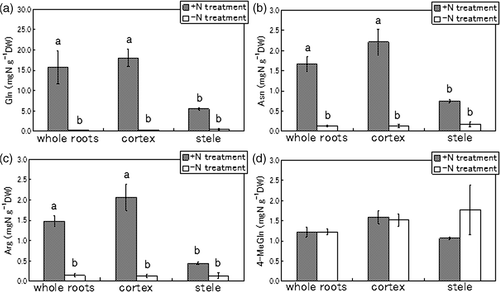
Figure 5. Ratios of the concentration of each amino acid. (a) Ratio of +N/−N in cortex, (b) ratio of +N/−N in stele, (c) ratio of cortex/stele on +N treatment, (d) ratio of cortex/stele on −N treatment. N, nitrogen; Gln, glutamine; Asn, asparagine; Arg, arginine; GABA, Gamma-Amino Butyric acid; NH3, ammonia; Gly, glycine; Pro, proline; Glu, glutamic acid; 4-MeGln, 4-methyleneglutamine; Ala, alanine.
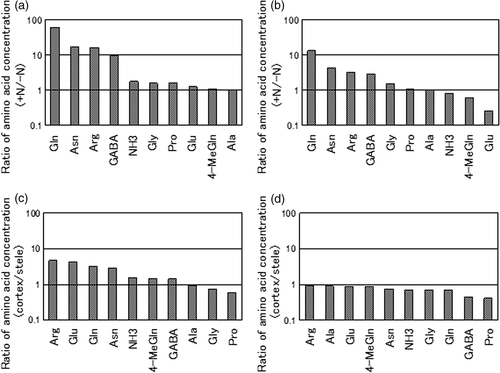
Figure 6. Comparison of the free amino acid concentration at five vertical positions in tulip (Tulipa gesneriana) roots cultivated with −N and +N treatments. The five parts of the roots were named “a”, “b”, “c”, “d” and “e,” from basalplate to root tip. Error bars show standard error (n = 4). Different letters above bars in each part indicate a significant difference at the level of P < 0.05. N, nitrogen; DW, dry weight.
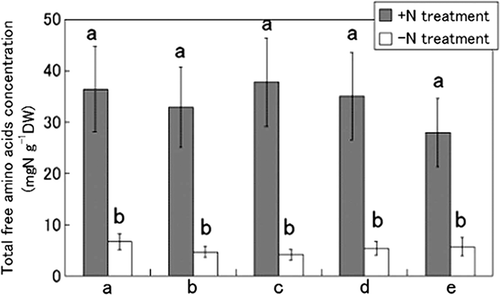
Figure 7. Comparison of predominant amino acids at five vertical positions in tulip roots cultivated with −N and +N treatments. The five parts of roots were named “a”, “b”, “c”, “d” and “e” from basalplate to root tip. (a) glutamine (Gln), (b) asparagine (Asn), (c) arginine (Arg), (d) 4-methyleneglutamine (4-MeGln) Errors bar show standard error (n = 4). Different letters above bars in each part indicate a significant difference at the level of P < 0.05. N, nitrogen; DW, dry weight.
